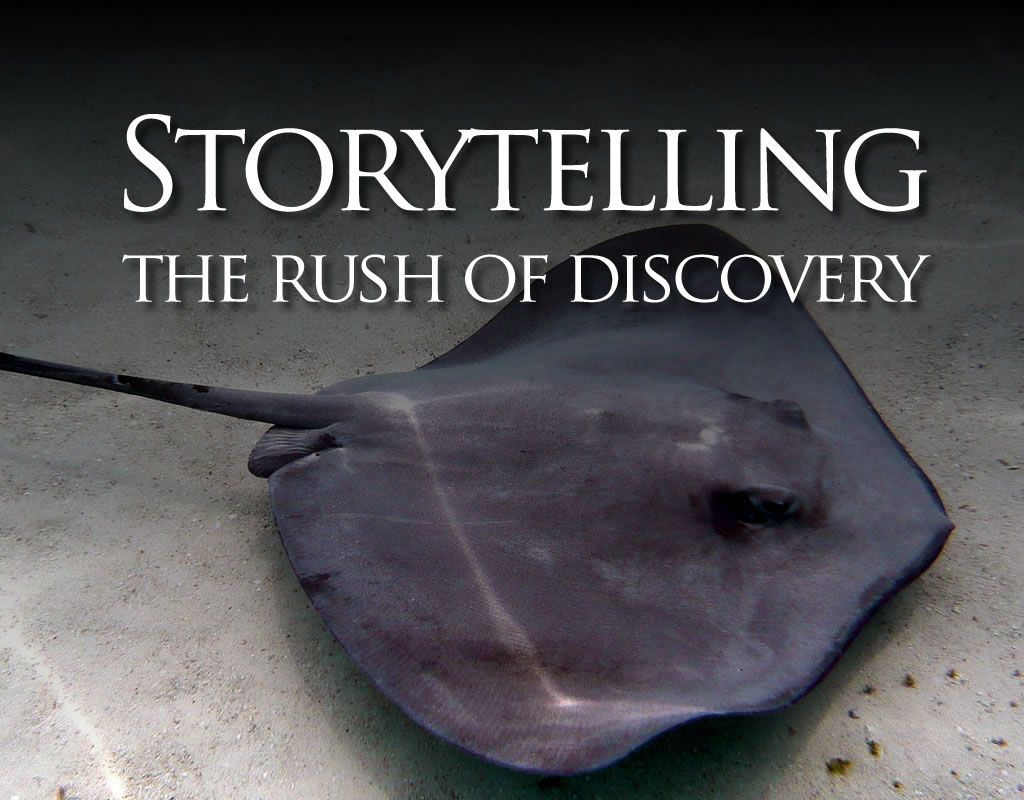Storytelling Tips: The Rush of Discovery

Storytelling tips: You’re walking along and you happen to look down. “Hey, that’s not a scrap of paper; that’s a $20 bill!” Isn’t it a rush when something we thought was useless turns out to be meaningful.
Stories—whether they’re truth or fiction—are powerful tools for connection and engagement—as long as you craft them well. The following short story demonstrates techniques you can use as a writer, speaker, or business presenter to make your messages stick and give your listeners that rush of discovery.
![]()
I am 24 years old, voyaging alone on a small sailboat in search of stories.
I anchor at Powell Cay—a small, uninhabited island in the northern Bahamas.
Imagine a grove of tall, wild coconut palms on one side, dramatic coral cliffs rising in the middle, and a rocky beach on the other side. The water is calm and clear—a patchwork quilt of vibrant turquoise, blue, and green.
I row my dinghy to the beach and begin to explore.
A small bronze plaque is affixed to the rocks: “Kathy Swedenborg Loved This Island”—a tribute to a young woman who died here with her boyfriend in 1979 when their boat burned.
Kathy’s memorial is unconcerned with what was lost. Instead, it connects her to this tranquil place—and to her enduring suggestion that I might love it, too.
After following the jungle path across the island to the beach on the ocean side, I return to my boat, play guitar for a while, read a bit, cook dinner, and then—as the sky turns from purple to black—I retire to my bunk and fall asleep.
Some time later, I am awakened by the light. A full moon has risen. I step out to the cockpit and gaze across a shimmering sonata of silver and black. The lunar light is brilliant enough to read by.
Something moves on the sea bottom—a big diamond shape.
And another.
Giant Atlantic stingrays crisscross the anchorage, their wings undulate slowly and gracefully—a moving tapestry of figure and ground, an Escher woodcut brought to life, a dream landscape.
I stare at this scene and wonder…
Do stingrays congregate here every night?
Or only when the moon is full?
Or perhaps only once—tonight.
It doesn’t matter. I am blessed to witness a secret dance of shadows and light.
Kathy Swedenborg loved this island. I understand.
![]()
Storytelling tips: Pacing: The mind works in fascinating ways. We take information in through our senses, and then our subconscious decides whether what we’ve perceived is meaningful. This is why the first thing you do when you have an auto accident is turn off your radio. Even if your car is on fire, you’ll turn that music off before you try to escape because the stream of useless data distracts you from making meaningful decisions about who requires your attention and what needs to be done to survive.
We filter out meaningless stimuli at every moment. Part of the reason it’s so important to use pacing in storytelling—to leave … those … delicious … pauses—is because once you’ve told your listener what your story is, you have to give your listener time to feel what it means.
Notice all the one sentence paragraphs in Kathy’s Island? It’s all about pacing.
Storytelling tips: Consider the potency of present tense storytelling. Instead of telling you what happened in the past, I tried to make my story happen for you in the present. If I did my job well, you didn’t even hear me; you were there—experiencing Kathy’s Island in your mind. You don’t have to tell every story in the present tense, but it’s a technique worth considering.
Storytelling tips: Engage the senses with vivid descriptions. Experience is not a list of ingredients. Turn feelings and reactions into words. Marvel at a “patchwork quilt.” Gaze at a “shimmering sonata.” Witness a “secret dance.” Language is the stained glass window through which we observe the universe. Choose your colors unapologetically. It isn’t like a “moving tapestry”; it is a “moving tapestry.”
Storytelling tips: The “loopback” or “callback” is among the storyteller’s most powerful tools. Plant suggestions, ideas, and story fragments. Distract your reader and bring these details back at the end of your narrative. Kathy Swedenborg’s tiny bronze plaque may have seemed unimportant at first; why should you care about Kathy? But because that factoid rode in on a horse made of colorful descriptions and rich experiences, you remembered it. When I looped back to Kathy, you said, “Wait! Don’t throw that out! That’s important!”
Storytelling tips: Conflict and transformation are two of the four elements of story. For a story to call itself a story, some conflict must be resolved; some person must be educated, enlightened, or changed in some authentic way. The conflict in Kathy’s Island is simple lack of awareness—a problem we’re all subject to. The main character (me) is subjected to a mysterious message. At the end of the story, the meaning of that message is revealed in an unexpected way. That’s transformation.
We all feel a rush when something we thought was useless turns out to be meaningful. Give your listener that magic—that rush of discovering something unexpected in your story.



You DiD your job well… I was totally in the space you described.
Eager for the next step on the island. You are captivating!
Now… only to apply your teachings.
Thanks Linda!